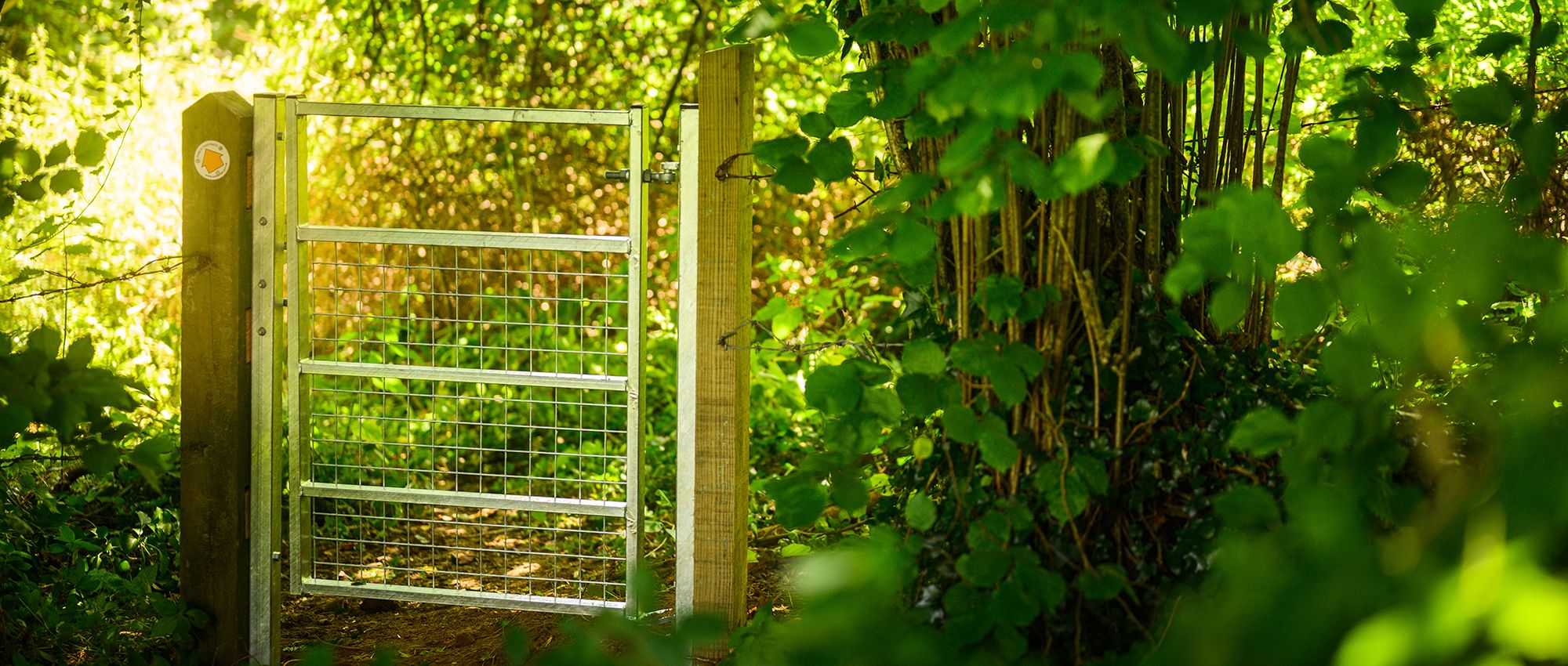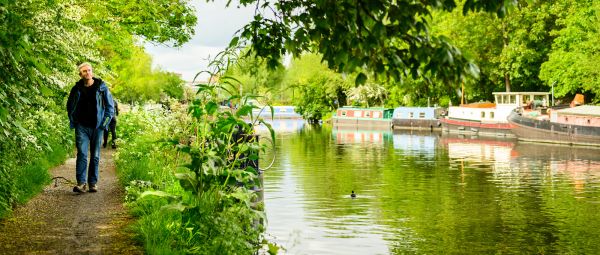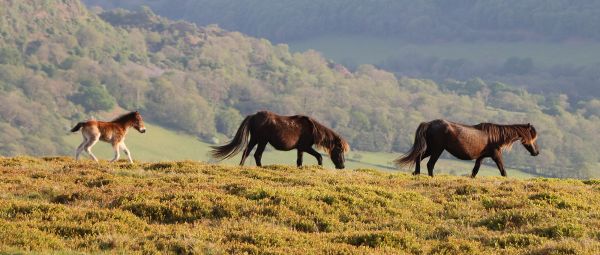Dealing with problems on public paths
Our guide to who is responsible for problems on public paths, how to contact them and what to expect.

(Advice relevant to England and Wales only. Find information about access rights in Scotland)
Keeping our network of paths, tracks and trails open for us all to enjoy
In England and Wales we are fortunate to have a wonderful network of paths, tracks and trails to enjoy all year round. There are 140,000 miles of public rights of way. They range from the most remote footpaths and bridleways through mountain ranges to alleyways in cities and towns.
Sometimes problems crop up on public paths. These may include:
-
locked gates, electric fences or barbed wire
-
overgrown paths
-
broken or unsafe stiles and bridges
-
muddy, flooded or ploughed surfaces
Dealing with problems yourself
If you are out on a walk and you come across an obstruction like overgrown brambles, fallen branches or crops growing on the surface of the path, you can take any or all of the following approaches to get through:
- You can move any obstruction (EG a fallen branch) out of the way if it is stopping you from getting through.
- You can deviate around the obstruction as long as you don’t leave that landowner’s land (EG if crops are blocking the path, you can deviate around the field edge but it’s best not to go into the neighbouring field as this may belong to someone else).
- You can cut back vegetation using a pair of pocket secateurs or scissors if you already have them on you. You should only cut back enough to get yourself, your companions, and your natural accompaniments through. You shouldn’t go out with the purpose of clearing vegetation without permission from the landowner as this could be considered criminal damage.
If you come across an obstruction that you can’t move out of the way or clear with your pocket secateurs, read on to find out how to report the problem to the responsible authority.
Can you report a problem on a path?
By reporting problems on public rights of way, you'll help protect the places we all love to wander. By law, public rights of way such as footpaths, bridleways and byways are classed as highways and therefore are the responsibility of the local highway authority. This will be the county council or unitary authority.
However, not all paths are public rights of way. If a path isn’t recorded on the legal documents that the local authority holds, called the Definitive Map or the List of Streets, the authority is unlikely to resolve problems like locked gates or intimidating signs.
How to check whether a path is a public right of way
Most local authorities have interactive maps of public rights of way on their websites. Search online for the name of the local authority and “definitive map” or “rights of way map”.
Alternatively, the local authority can check the Definitive Map for you. Call or email the rights of way department. Give them specific information about the path concerned such as grid references or nearby road names. You can also book an appointment to view the physical Definitive Map in person.
How to report problems on public rights of way
You should report problems on public rights of way to the rights of way department of the local highway authority. Use our highway authority map to find out where to report a problem. Simply navigate to where the problem is, click on the map, and a link to the relevant local authority will pop up.
Unfortunately, many local authority websites aren’t mobile friendly so it can be difficult to report the problem on the spot. You may find it easier to fill in the form once you can access a computer. Take pictures of the problem and a note of the location using grid references or What3Words.
What to expect once you’ve reported a problem
The local authority will investigate the problem, usually by visiting the site.
Often problems can be resolved by:
-
routine council maintenance work such as cutting back brambles
-
the council writing to the landowner informing them of the problem and asking them to resolve it
This usually takes a few weeks but with very complex problems it can take months or years before a resolution is reached. If there is a serious safety risk, the council might make a Temporary Closure Order to stop the public using the path. This is most common with unsafe bridges.
If you’ve made a report and haven’t received any feedback, ask the council for an update by email or phone.
What can be done about problems on paths that aren’t public rights of way?
Unfortunately your options are limited regarding paths that are not public rights of way.
You can apply to the local authority to add public paths to the Definitive Map. This is quite an involved process and will take considerable time and effort. Follow our advice on how to claim unrecorded rights of way and how to apply for a Definitive Map Modification Order.
How the Ramblers help
We're dedicated to preserving and improving the hundreds of thousands of miles of well-loved paths, tracks and trails the country. And our local volunteers work tirelessly to protect the path network by:
-
Organising regular path surveys to check for problems.
-
Carrying out site visits to inspect any issues and reporting them to local authorities to be resolved.
-
Repairing and replacing stiles, steps, and signposts, and clearing paths of obstacles and overgrowth. Liaising with local authorities over proposed changes to rights of way.
-
Visiting sites to consider proposed changes to rights of way and objecting to plans or negotiating new routes where necessary.
-
Commenting on local authority plans and policies related to rights of way, pedestrian access, and safety.
-
Lobbying locally to protect the paths, tracks and trails we all love, and open up more places to walk
If you are having trouble with a path and want help, contact your local Ramblers group with details of the problem.

Problems on paths with no public right of way
Not all paths are public rights of way. Here’s our guidance on what to do if there’s a problem on a path and it isn’t a public right of way.

Rules around keeping animals in fields with paths
When walking, you may encounter animals in a field that you consider to be dangerous. Read our summary of the rules to see if you should take action.

The Definitive Map
The Definitive Map is an important legal record of public rights of way in England and Wales. But how and why did it come to exist?

Closures and diversions on the rights of way network
How local authorities are able to permanently or temporarily change the public rights of way network.